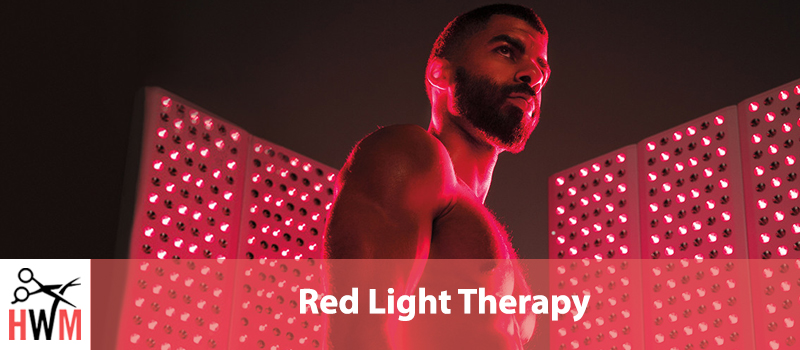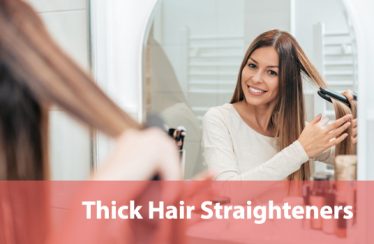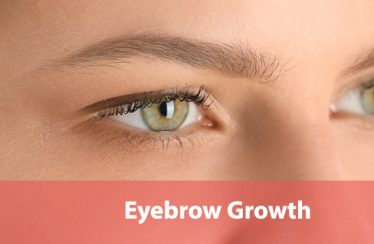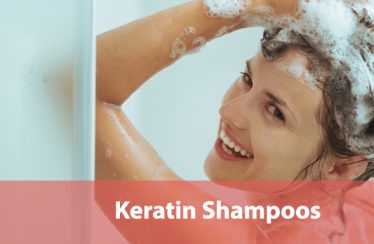Red light therapy sounds like it belongs on a website about growing plants or neonatal treatments and decidedly not on a personal grooming website.
Don’t judge a book by its cover.
Red light therapy was, admittedly, first developed to aid in plant growth in space, cool right? Nowadays while it still has plant growth applications, the more important and more controversial use is in skincare, hair growth, and even wound-healing among a long list of other applications.
It sounds like something out of science fiction, but the science, while preliminary and still being evaluated, is anything but fiction.
In this article, we’re going to discuss what red light therapy (RLT) is, how it is thought to function, and some of the many applications it’s already being used for or is being tested for.
We’ll also talk about the wavelength of light you should look for if you decide to try an at-home RLT device to take advantage of this new multifaceted treatment.
- What is Red Light Therapy
- Where Can You Get Red Light Treatment?
- What Red Light Therapy Can Do
- Improving Skin Health and Appearance
- Treating Acne
- Healing Scars
- Encouraging Hair Growth
- Anti-Inflammatory
- Treating Stretch Marks and Cellulite
- Wound Healing
- Treating Sunburn
- Treating Joint Pain (particularly osteoarthritis)
- Possible Short-Term Treatment for Carpal Tunnel
- Healing and Preventing Recurrent Cold Sores
What is Red Light Therapy
You may have heard of laser therapies in the last few years, for skin treatments, hair removal, and even helping reduce deep-tissue inflammation and scar tissue. It’s reasonable to assume that RLT is another in the line of laser therapies available only in medical practitioners’ offices.
Fortunately for us, RLT is neither a laser therapy nor a tightly controlled medical treatment. RLT takes advantage of the therapeutic effects of low-level low-wavelength light that isn’t damaging to tissue. That’s why this treatment isn’t restricted to medical use, the risk is so low it’s deemed safe for ordinary consumers.
Effective RLT is red light between 665 nanometers (nm) and 808 nm. Treatment is simple, you just expose skin to the correct wavelength light for a few minutes at a time. Depending on the treatment goals and the device used, you might use a very focused area of light or you might use a larger device that distributes the same intensity of light over a wider area.
Neither type of RLT device results in a laser. While there are some reports of burns and other tissue damage resulting from extreme over-use of these devices (such as falling asleep on an RLT bed and seriously over-extending treatment time), the vast majority of the time this treatment is safe and does not cause any kind of harm.
RLT also avoids the potential damage of full-spectrum light treatments, like trying to get more sunlight or using a tanning bed, since it doesn’t include any UVA or UVB spectrum light. Depending on the purpose of the device you might see blue and green light options included, but all therapeutic light treatments avoid UVA and UVB.
The light treatment penetrates about 10 millimeters or 1 centimeter into the body, unlike more powerful laser treatments that can be calibrated to much deeper tissues.
Treatment time can be as little as one minute, and some spas and dermatologists offer treatments lasting as much as half an hour.
Where Can You Get Red Light Treatment?
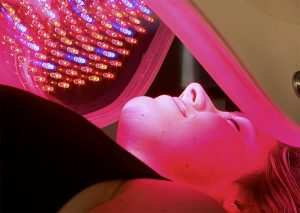
There are plenty of options available for RLT, but since the treatment is still relatively new it may be difficult to find places that offer it.
If you’re interested in RLT you should check if it’s offered at local dermatology offices. A dermatologist is a good first step since they are more familiar with RLT’s uses for skin and hair treatment (we’ll discuss RLT uses in a moment) and can also help you choose an at-home device if you need or would prefer to go that route over making appointments.
If RLT isn’t available through any of the dermatologists in your area, consider checking salons, spas, tanning salons, and gyms to see if they have an RLT treatment option.
Make sure you ask about the treatment and the device they use before you make an appointment. It’s possible to replace a regular tanning bed’s bulb with red bulbs, or to buy red bulbs for other lights and devices but doing that doesn’t achieve the correct intensity or wavelength of light for good results.
At best these cheap RLT alternatives may not work, and won’t work as well as an FDA approved device, and at worst they may include dangerous wavelengths of light that cause skin damage rather than rejuvenation.
If those locations aren’t convenient or available at all, you can always order an in-home RLT device. Check to make sure any device you purchase has good reviews, is in the right wavelength of light, and, preferably, has FDA approval.
What Red Light Therapy Can Do
All of the research into red light therapy is fairly preliminary. While all these applications have some scientific backing already, some of them are still controversial, and the exact mechanism causing the effect is often more hypothetical than known.
A lot of RLT studies are still in need of replication, and most will need other studies and study designs to look into the details behind what is happening on a cellular level.
With that said, the science on RLT is very promising, and since the risk is incredibly minimal you don’t need to hold off years for those necessary studies to be completed to start benefiting from RLT.
Here are some of the uses we already know about:
Improving Skin Health and Appearance
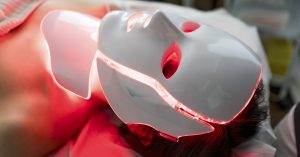
RLT for this purpose is usually delivered via a face mask, a red-light bed, or a specially designed lamp. Since the light is likely to be more distributed using those devices, the treatment may last longer than with targeted devices.
RLT works by stimulating the mitochondria (the powerhouse of the cell) to produce more ATP, which is the basic energy required for all cellular functions.
Having more ATP available is thought to then stimulate collagen production, circulation, and even blood vessel formation, which works to improve skin color and texture.
Over time, having more ATP has been shown to reduce the effects of aging on skin, since aging skin is partially due to collagen reduction in the skin (your skin is made of 70% collagen!), having more can help you look and feel younger.
Additional collagen will also help tighten loose or sagging skin, helping with laugh lines and crows feet, and other subtle signs of age that appear even on healthy well-moisturized skin.
Treating Acne
Acne, especially adult acne, is hard to treat and embarrassing to have. Even mild acne can make you feel like everyone is staring at it (even though they aren’t), and if cleansers and moisturizers have failed it can feel like you’re just stuck with acne forever.
Fortunately, RLT, and other wavelength light therapy like blue light, can be used concurrently with your current acne regimen.
There are also spot-treatment devices available if you don’t need a general facial treatment and only need to treat small individual breakouts.
Right now, the science is pointing to improved cellular health combined with better circulation being at the root of the benefits RLT has for acne.
Healing Scars
RLT is also being explored for healing scars or reducing the overall appearance of scar tissue, on your skin.
Additional collagen production, stimulated by increased ATP in your skin cells, is thought to promote the growth of healthy normal skin tissue. This reduces the need for scar tissue and eventually helps to break down the adhesive connections between scar tissue cells, reducing the buildup of cells that form the scar.
Increased circulation also helps scar tissue heal and loosen back into normal tissue. The added collagen and other proteins and nutrients your cells can produce with access to additional ATP can also improve texture in existing scars.
Over time that will reduce the puffiness of larger bulky scars and can reduce the appearance of or eliminate surface skin abrasions and scars.
Encouraging Hair Growth
The science on this one is more preliminary than some of the others we’ve discussed in this article, but RLT is also being shown to help with hair thinning and loss, particularly alopecia, which is more commonly known as male pattern baldness and female pattern baldness.
It can also help in cases of thyroid or other hormonal disorders that cause hair loss, although the specific effectiveness for those disorders has not been thoroughly tested.
Like with skin, hair growth is heavily influenced by circulation and the availability of nutrients and ATP. Since RLT encourages circulation during the treatment and over the long term, it can help with hair growth and most other surface tissue health.
Anti-Inflammatory
This is one of the most interesting and promising possible applications for RLT is as an anti-inflammatory treatment, both for injury and a range of inflammatory disorders.
The exact mechanism for the long-term effects of RLT on inflammation isn’t well understood. During treatment, it encourages circulation to the treatment area and can stimulate blood vessel growth that helps improve long term circulation in that spot.
However, the studies that have been done on RLT and inflammation have also shown long-lasting whole-body anti-inflammatory effect that persists after the treatment.
As we said, the studies on this are very preliminary and not well understood, so it’s not known how long the anti-inflammatory effects are, or if there are specific forms of RLT treatment or areas of treatment that are more effective than others for full-body effects.
Treating Stretch Marks and Cellulite
This application combines the best of the two effects of red light therapy to treat some of the trickiest skin issues out there. Stretch marks and cellulite are both incredibly common, more common as you age, and difficult to get rid of after they appear.
Both call for collagen-boosting lotions and stimulating the area to increase blood flow, and both have fairly low at-home-treatment success rates because it takes a long-term commitment to those temporary skin treatments to begin to see changes.
RTL has a major advantage here in that it continues working after the treatment itself has stopped. Creating more ATP gives your cells the ability to create more collagen, giving them a long-term boost instead of a temporary topical addition.
In addition to helping with collagen production, red light therapy is also thought to address the other major source of healing and recovery for stretch marks and cellulite, bringing added circulation to the area.
The additional circulation helps break up the tissue that has been damaged, regardless of the source of that damage, while also bringing in the additional oxygen and nutrients to grow new healthier skin.
Since red light therapy is also thought to encourage blood vessel development, this effect, like ATP production and boosted collagen production, lasts longer than the individual treatment. That drastically increases the effective time of each treatment and reduces the amount of time needed to start seeing results.
Wound Healing
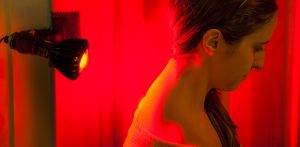
This is another case of preliminary results showing a positive effect from RLT, decreasing the time needed to heal and helping the healing tissue to heal more completely with less scar tissue and residual damage.
However, like most of the applications for red light therapy, the science is very new, and more studies, along with replication studies, are still needed before this therapy will be proven.
That said, it has possible applications in helping with the kinds of cuts and bruises that are a normal part of daily life at home, especially for kids in sports programs, avid hikers, or those who engage in other potentially risky entertainment activities.
It may also after the studies have been done, have a role to play in recovering from major surgery and other more significant wounds.
One of the most interesting applications that has had some testing already, and shown good results, is in slow-healing wounds like diabetic leg sores.
Part of the challenge with most slow healing wounds is getting the body’s resources to the wound site. With diabetic leg sores, the problem is a combination of, in many patients, reduced nerve function preventing the body from identifying how serious the sore has become, and the body’s resources already being taxed.
Using things like RLT that help boost local area health on the cellular level can help address the problem more quickly by encouraging the body to send resources to those areas in addition to making them more available locally, without any additional strain on the body itself.
Treating Sunburn
I know, I know, treating a sunburn with more light sounds about as backward as it gets. The standard treatment for a bad sunburn has long been applying aloe gel, lotion, and avoiding exposing the burn to more sunlight until it’s healed.
Sunburns are the result of your body determining that the surface layers of skin, sometimes 1 layer, sometimes more, have received a high enough dose of radiation that they no longer have the DNA integrity to safely divide and produce more of themselves.
The very surface of your skin isn’t still dividing, those cells are dead and are there to form a barrier between the elements and the actively dividing skin cells further down.
So once you’ve damaged the dividing cells, your skin starts to blister or peel because many more cells are all trying to self-destruct at once, while the cells that are still actively dividing and trying to replace the damaged ones are more sensitive and irritated at being exposed to the elements early.
Back to RLT. Red light therapy improves cell health, so it can’t help the cells that are in the process of self-destruction (to protect your health, they’re such noble cells), but it can help the healthy cells have the resources they need to recover more quickly.
Treating Joint Pain (particularly osteoarthritis)
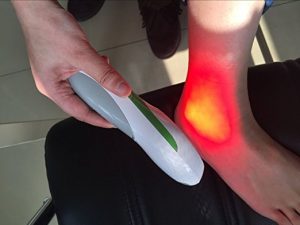
Joint pain is often the result of inadequate lubrication between the moving parts of the joint, which causes the bones to grind and wear down over time.
It can also be an issue if you have abnormal bone growth and not enough lubrication to cushion the growth, or just the break down of those high-use areas over time.
RTL can help with multiple causes of joint pain, from general wear and tear to issues not having enough joint fluid.
The function is largely the same as it is for other treatments with RLT, although the devices used to treat joint pain are typically targeted rather than general dispersal, so you might need a different device for your hair or skin than you do to target injuries and joint pain.
By boosting ATP production and increasing blood flow, like with skincare, the RLT brings the needed nutrients and energy to a problem area, allowing your body to perform its natural healing and restorative processes more quickly and effectively than without intervention.
This increases the amount of joint fluid, can help to improve the quality of the joint fluid, as well as providing the resources needed to begin healing damaged soft tissue in and around the joint.
Now, RLT, as we mentioned earlier, is a low-penetration treatment. It’s not the same as a laser pain treatment, like K-laser, that you can get a doctor’s office or through another medical practitioner.
That means that your results aren’t going to be as significant for this kind of deeper-tissue work, although you can still get some benefit over time as well as some immediate pain relief.
Again, though, the science on these treatments is still preliminary, so we don’t know everything about how they work or who RLT will work for.
Possible Short-Term Treatment for Carpal Tunnel
Carpal tunnel syndrome is painful, difficult to work around, and, as office jobs and other high-intensity repetitive use tasks like typing become more common, so does carpal tunnel syndrome.
Now, RLT isn’t being considered as a long-term treatment or cure for carpal tunnel syndrome. Instead, it’s being considered for a short-term treatment to reduce pain and dysfunction associated with carpal tunnel syndrome while also using other therapeutic techniques or waiting for surgical intervention and to help prevent the situation from getting worse until other, more effective, treatments can be used.
With that said, RLT is showing great results as an immediate pain-relief alternative for other types of pain, especially wear and tear and inflammatory pain, which are typical of carpal tunnel.
So, especially if other treatment methods have not adequately controlled your symptoms, it might be worth talking to your doctor about RLT or seeing if a local gym or spa offers RLT so you can try it without having to invest in an in-home device.
Healing and Preventing Recurrent Cold Sores
Cold sores are a painful annoyance, and can even be embarrassing despite being incredibly common. Treating them so that the first cold sore resolves faster and doesn’t reoccur or spring up in another spot, can be a challenge.
There are topical treatments that reduce the discomfort of cold sores, and some do also help the sore heal more quickly, but if you get cold sores regularly you likely want to do even more to treat and prevent them from coming back.
RLT is showing preliminary results as a potential cold sore treatment by giving the cells in the area the nutrients and energy they need to fight the virus responsible for cold sores and kick it out sooner.
Conclusion
RLT still sounds a lot like a treatment from science fiction. But, treating illness and injury with light isn’t as new as it seems. Blue light helps with jaundice in infants, can help to treat acne.
Sunlight and other light treatments help with vitamin D deficiency, seasonal affective disorder, and is showing some results for other mental health disorders as well.
We’ve discovered that manipulating the wavelength and intensity of light we’re exposed to through the day can help treat sleep disorders, especially insomnia. Effective daylight cycle lights can even boost morning energy and day-time productivity.
So, while red light therapy seems like something out of a Star Trek medical bay it’s not a crazy out of now here advancement in science. Instead, think of it as one step closer to effective medical treatments that we’ve been dreaming about in our science fiction for decades.
The science on this is still highly preliminary, but the results so far are good. As we explore more of what RLT can do its effective treatment list may narrow, or we may still be at the tip of the iceberg for what it can do.
Hopefully, after reading this article, you feel more informed about what RLT can do, how it works, and what is still being explored.
Contents
- What is Red Light Therapy
- Where Can You Get Red Light Treatment?
- What Red Light Therapy Can Do
- Improving Skin Health and Appearance
- Treating Acne
- Healing Scars
- Encouraging Hair Growth
- Anti-Inflammatory
- Treating Stretch Marks and Cellulite
- Wound Healing
- Treating Sunburn
- Treating Joint Pain (particularly osteoarthritis)
- Possible Short-Term Treatment for Carpal Tunnel
- Healing and Preventing Recurrent Cold Sores
